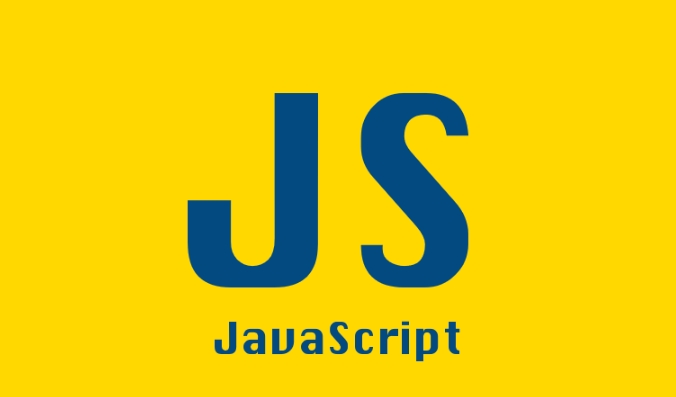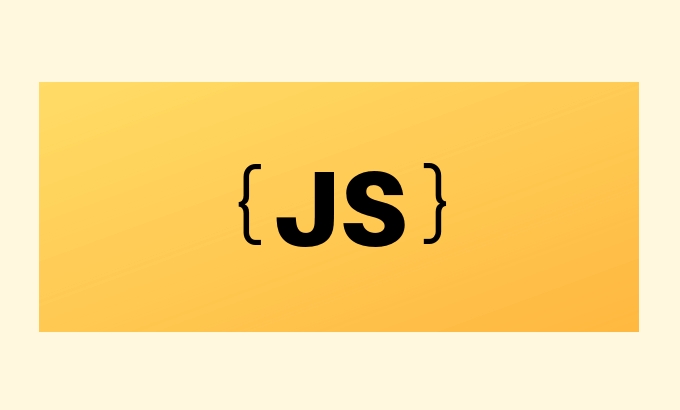To ensure that JavaScript features are available to all users, follow four key practices: 1. Use aria-live attribute to notify screen readers of dynamic content updates, distinguish polite from assertive levels; 2. Use ARIA roles and state attributes to define custom control behavior and keep state synchronized; 3. Implement keyboard navigation support, including Tab focus switching and Enter/Space key triggering operations; 4. Avoid excessive use of ARIA, and prioritize HTML5 semantic tags to reduce redundant code and improve maintenance.

In web development, ensuring that JavaScript functions are available to all users, especially those using assistive technologies such as screen readers, is a responsibility that cannot be ignored. ARIA (Accessible Rich Internet Applications) provides some key attributes to help us make up for the lack of accessibility of HTML itself.

Here are some practical JavaScript accessibility best practices combined with ARIA usage scenarios and considerations.
Make sure dynamic content updates are visible to screen readers
When a page is loaded or changed through JavaScript, the screen reader may not automatically read out these changes. At this time, you can use aria-live attribute to notify the auxiliary technology that there is content update.

-
Usage example :
<div aria-live="polite" id="status-message"></div>
When updating content in this area in JS, the screen reads the new content when appropriate.

Pay attention to level settings :
-
polite: Non-emergency update, suitable for most situations. -
assertive: Important and immediate attention, such as error prompts.
-
Avoid abuse of assertive , otherwise it will interrupt the user's current operation and cause interference.
Correct use of ARIA roles and status properties
Some UI controls cannot express their functions directly in native HTML, such as custom drop-down menus, tag pages, modal boxes, etc. At this time, you need to use ARIA role and status attributes to clarify their behavior.
Common roles include:
-
role="tablist"/role="tab"/role="tabpanel" -
role="dialog"orrole="alertdialog"is used for pop-up windows -
role="menu"/role="menuitem"for custom menus
-
At the same time, the status attributes:
-
aria-expandedindicates whether the folded panel is expanded -
aria-selectedindicates whether an option is selected. -
aria-hiddencontrols whether the element is hidden from assistive technology
-
Remember to dynamically update these properties when the interaction occurs to keep them consistent with the interface state.
Make keyboard navigation support more complete
Many users rely on keyboard operation pages, so they cannot only consider mouse interaction. JavaScript controls must support the Tab key to switch focus and can trigger operations with the Enter or Space keys.
- Implementation suggestions:
- Add
tabindex="0"to interactive elements to make them focusable - Implement button behavior using
buttonor element withrole="button" - Intercept keyboard events and handle the response logic of Enter/Space
- Add
For example, a custom button:
<div role="button" tabindex="0">Click me</div>
document.querySelector('[role="button"]').addEventListener('keydown', function(e) {
if (e.key === 'Enter' || e.key === ' ') {
// Execute click logic}
}); This will allow keyboard users to use it normally even if it is not native <button></button> .
Don't overuse ARIA
Although ARIA is powerful, it is not “the more the better”. Many semantic tags in HTML5 have good accessibility support, such as <nav></nav> , <main></main> , <header></header> , etc., and do not require additional role .
If you find that the ARIA attribute you wrote can be replaced by native HTML, it is best to replace it with a semantic tag. This not only reduces the amount of code, but also reduces maintenance costs and the chance of error.
Basically that's it. As long as you consider the operation methods of different users during the development process and add a little ARIA's "embellishment" to significantly improve the accessibility of the website.
The above is the detailed content of JavaScript Accessibility Best Practices with ARIA. For more information, please follow other related articles on the PHP Chinese website!

Hot AI Tools

Undress AI Tool
Undress images for free

Undresser.AI Undress
AI-powered app for creating realistic nude photos

AI Clothes Remover
Online AI tool for removing clothes from photos.

Clothoff.io
AI clothes remover

Video Face Swap
Swap faces in any video effortlessly with our completely free AI face swap tool!

Hot Article

Hot Tools

Notepad++7.3.1
Easy-to-use and free code editor

SublimeText3 Chinese version
Chinese version, very easy to use

Zend Studio 13.0.1
Powerful PHP integrated development environment

Dreamweaver CS6
Visual web development tools

SublimeText3 Mac version
God-level code editing software (SublimeText3)
 How does garbage collection work in JavaScript?
Jul 04, 2025 am 12:42 AM
How does garbage collection work in JavaScript?
Jul 04, 2025 am 12:42 AM
JavaScript's garbage collection mechanism automatically manages memory through a tag-clearing algorithm to reduce the risk of memory leakage. The engine traverses and marks the active object from the root object, and unmarked is treated as garbage and cleared. For example, when the object is no longer referenced (such as setting the variable to null), it will be released in the next round of recycling. Common causes of memory leaks include: ① Uncleared timers or event listeners; ② References to external variables in closures; ③ Global variables continue to hold a large amount of data. The V8 engine optimizes recycling efficiency through strategies such as generational recycling, incremental marking, parallel/concurrent recycling, and reduces the main thread blocking time. During development, unnecessary global references should be avoided and object associations should be promptly decorated to improve performance and stability.
 How to make an HTTP request in Node.js?
Jul 13, 2025 am 02:18 AM
How to make an HTTP request in Node.js?
Jul 13, 2025 am 02:18 AM
There are three common ways to initiate HTTP requests in Node.js: use built-in modules, axios, and node-fetch. 1. Use the built-in http/https module without dependencies, which is suitable for basic scenarios, but requires manual processing of data stitching and error monitoring, such as using https.get() to obtain data or send POST requests through .write(); 2.axios is a third-party library based on Promise. It has concise syntax and powerful functions, supports async/await, automatic JSON conversion, interceptor, etc. It is recommended to simplify asynchronous request operations; 3.node-fetch provides a style similar to browser fetch, based on Promise and simple syntax
 JavaScript Data Types: Primitive vs Reference
Jul 13, 2025 am 02:43 AM
JavaScript Data Types: Primitive vs Reference
Jul 13, 2025 am 02:43 AM
JavaScript data types are divided into primitive types and reference types. Primitive types include string, number, boolean, null, undefined, and symbol. The values are immutable and copies are copied when assigning values, so they do not affect each other; reference types such as objects, arrays and functions store memory addresses, and variables pointing to the same object will affect each other. Typeof and instanceof can be used to determine types, but pay attention to the historical issues of typeofnull. Understanding these two types of differences can help write more stable and reliable code.
 React vs Angular vs Vue: which js framework is best?
Jul 05, 2025 am 02:24 AM
React vs Angular vs Vue: which js framework is best?
Jul 05, 2025 am 02:24 AM
Which JavaScript framework is the best choice? The answer is to choose the most suitable one according to your needs. 1.React is flexible and free, suitable for medium and large projects that require high customization and team architecture capabilities; 2. Angular provides complete solutions, suitable for enterprise-level applications and long-term maintenance; 3. Vue is easy to use, suitable for small and medium-sized projects or rapid development. In addition, whether there is an existing technology stack, team size, project life cycle and whether SSR is needed are also important factors in choosing a framework. In short, there is no absolutely the best framework, the best choice is the one that suits your needs.
 JavaScript time object, someone builds an eactexe, faster website on Google Chrome, etc.
Jul 08, 2025 pm 02:27 PM
JavaScript time object, someone builds an eactexe, faster website on Google Chrome, etc.
Jul 08, 2025 pm 02:27 PM
Hello, JavaScript developers! Welcome to this week's JavaScript news! This week we will focus on: Oracle's trademark dispute with Deno, new JavaScript time objects are supported by browsers, Google Chrome updates, and some powerful developer tools. Let's get started! Oracle's trademark dispute with Deno Oracle's attempt to register a "JavaScript" trademark has caused controversy. Ryan Dahl, the creator of Node.js and Deno, has filed a petition to cancel the trademark, and he believes that JavaScript is an open standard and should not be used by Oracle
 Understanding Immediately Invoked Function Expressions (IIFE) in JavaScript
Jul 04, 2025 am 02:42 AM
Understanding Immediately Invoked Function Expressions (IIFE) in JavaScript
Jul 04, 2025 am 02:42 AM
IIFE (ImmediatelyInvokedFunctionExpression) is a function expression executed immediately after definition, used to isolate variables and avoid contaminating global scope. It is called by wrapping the function in parentheses to make it an expression and a pair of brackets immediately followed by it, such as (function(){/code/})();. Its core uses include: 1. Avoid variable conflicts and prevent duplication of naming between multiple scripts; 2. Create a private scope to make the internal variables invisible; 3. Modular code to facilitate initialization without exposing too many variables. Common writing methods include versions passed with parameters and versions of ES6 arrow function, but note that expressions and ties must be used.
 Handling Promises: Chaining, Error Handling, and Promise Combinators in JavaScript
Jul 08, 2025 am 02:40 AM
Handling Promises: Chaining, Error Handling, and Promise Combinators in JavaScript
Jul 08, 2025 am 02:40 AM
Promise is the core mechanism for handling asynchronous operations in JavaScript. Understanding chain calls, error handling and combiners is the key to mastering their applications. 1. The chain call returns a new Promise through .then() to realize asynchronous process concatenation. Each .then() receives the previous result and can return a value or a Promise; 2. Error handling should use .catch() to catch exceptions to avoid silent failures, and can return the default value in catch to continue the process; 3. Combinators such as Promise.all() (successfully successful only after all success), Promise.race() (the first completion is returned) and Promise.allSettled() (waiting for all completions)
 What is the cache API and how is it used with Service Workers?
Jul 08, 2025 am 02:43 AM
What is the cache API and how is it used with Service Workers?
Jul 08, 2025 am 02:43 AM
CacheAPI is a tool provided by the browser to cache network requests, which is often used in conjunction with ServiceWorker to improve website performance and offline experience. 1. It allows developers to manually store resources such as scripts, style sheets, pictures, etc.; 2. It can match cache responses according to requests; 3. It supports deleting specific caches or clearing the entire cache; 4. It can implement cache priority or network priority strategies through ServiceWorker listening to fetch events; 5. It is often used for offline support, speed up repeated access speed, preloading key resources and background update content; 6. When using it, you need to pay attention to cache version control, storage restrictions and the difference from HTTP caching mechanism.







